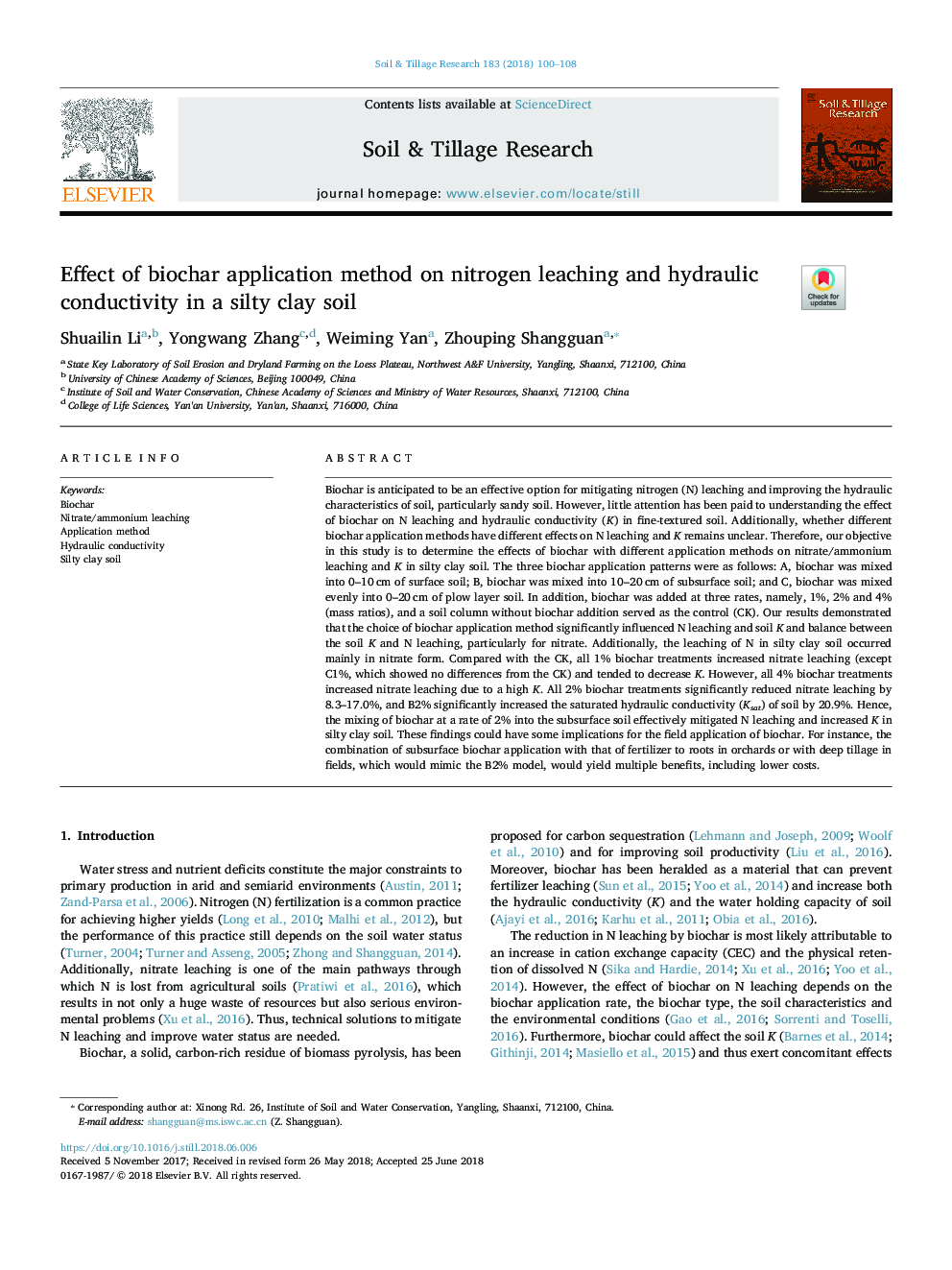| کد مقاله | کد نشریه | سال انتشار | مقاله انگلیسی | نسخه تمام متن |
|---|---|---|---|---|
| 6772938 | 1431820 | 2018 | 9 صفحه PDF | دانلود رایگان |
عنوان انگلیسی مقاله ISI
Effect of biochar application method on nitrogen leaching and hydraulic conductivity in a silty clay soil
ترجمه فارسی عنوان
اثر روش کاربرد زیستی خوار بر میزان نشتی و هدایت هیدرولیکی در یک خاک رس خاکستری
دانلود مقاله + سفارش ترجمه
دانلود مقاله ISI انگلیسی
رایگان برای ایرانیان
کلمات کلیدی
موضوعات مرتبط
مهندسی و علوم پایه
مهندسی انرژی
انرژی های تجدید پذیر، توسعه پایدار و محیط زیست
چکیده انگلیسی
Biochar is anticipated to be an effective option for mitigating nitrogen (N) leaching and improving the hydraulic characteristics of soil, particularly sandy soil. However, little attention has been paid to understanding the effect of biochar on N leaching and hydraulic conductivity (K) in fine-textured soil. Additionally, whether different biochar application methods have different effects on N leaching and K remains unclear. Therefore, our objective in this study is to determine the effects of biochar with different application methods on nitrate/ammonium leaching and K in silty clay soil. The three biochar application patterns were as follows: A, biochar was mixed into 0-10â¯cm of surface soil; B, biochar was mixed into 10-20â¯cm of subsurface soil; and C, biochar was mixed evenly into 0-20â¯cm of plow layer soil. In addition, biochar was added at three rates, namely, 1%, 2% and 4% (mass ratios), and a soil column without biochar addition served as the control (CK). Our results demonstrated that the choice of biochar application method significantly influenced N leaching and soil K and balance between the soil K and N leaching, particularly for nitrate. Additionally, the leaching of N in silty clay soil occurred mainly in nitrate form. Compared with the CK, all 1% biochar treatments increased nitrate leaching (except C1%, which showed no differences from the CK) and tended to decrease K. However, all 4% biochar treatments increased nitrate leaching due to a high K. All 2% biochar treatments significantly reduced nitrate leaching by 8.3-17.0%, and B2% significantly increased the saturated hydraulic conductivity (Ksat) of soil by 20.9%. Hence, the mixing of biochar at a rate of 2% into the subsurface soil effectively mitigated N leaching and increased K in silty clay soil. These findings could have some implications for the field application of biochar. For instance, the combination of subsurface biochar application with that of fertilizer to roots in orchards or with deep tillage in fields, which would mimic the B2% model, would yield multiple benefits, including lower costs.
ناشر
Database: Elsevier - ScienceDirect (ساینس دایرکت)
Journal: Soil and Tillage Research - Volume 183, November 2018, Pages 100-108
Journal: Soil and Tillage Research - Volume 183, November 2018, Pages 100-108
نویسندگان
Shuailin Li, Yongwang Zhang, Weiming Yan, Zhouping Shangguan,
